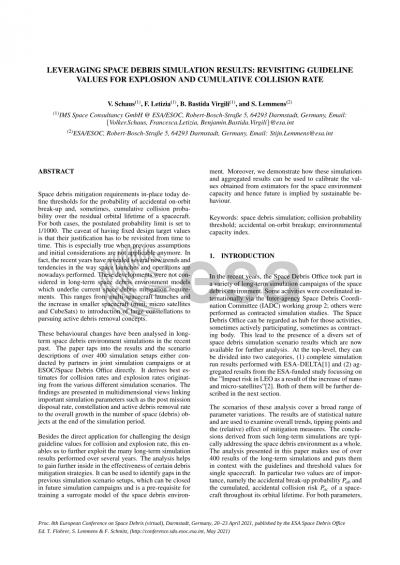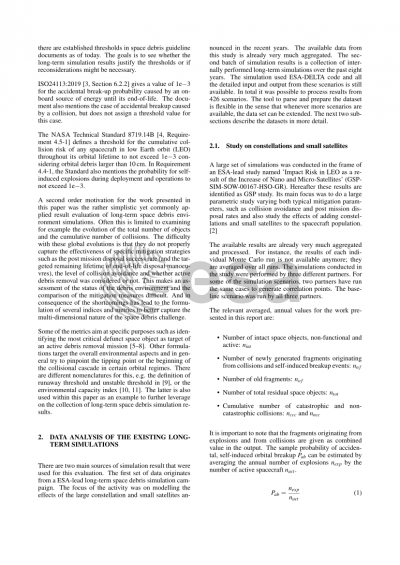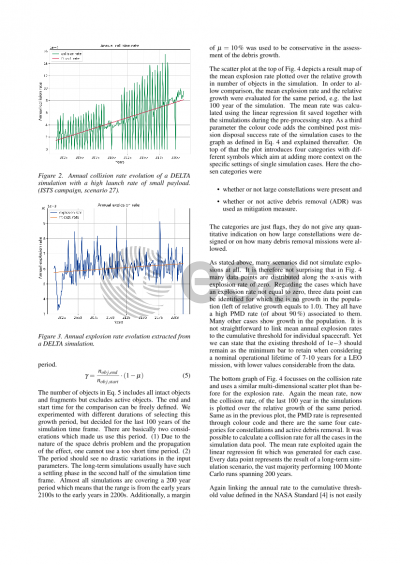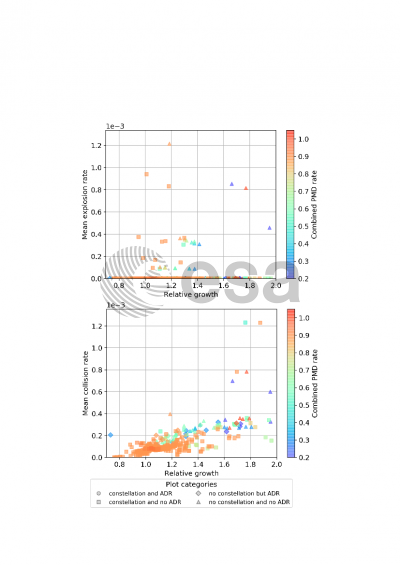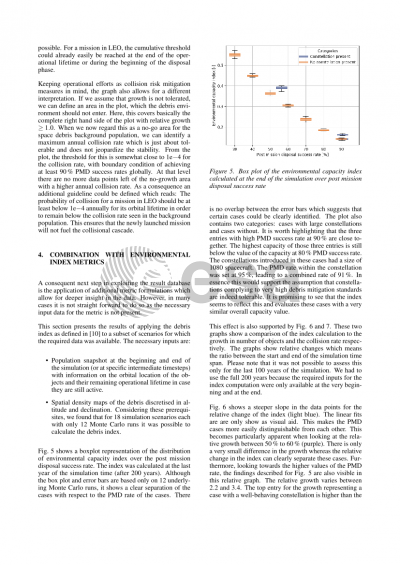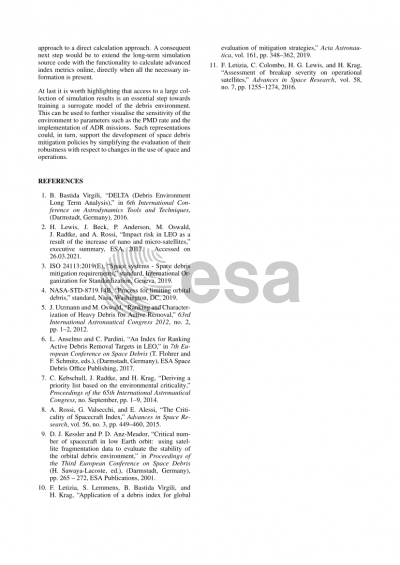Document details

Abstract
Space debris mitigation requirements in-place today define thresholds for the probability of accidental on-orbit break-up and, sometimes, cumulative collision probability over the residual orbital lifetime of a spacecraft. For both cases, the postulated probability limit is set to 1/1000. The caveat of having fixed design target values is that their justification has to be revisited from time to time. This is especially true when previous assumptions and initial considerations are not applicable anymore. In fact, the recent years have revealed several trends and tendencies in the way space launches and operations are nowadays performed. These developments were not considered in long-term space debris environment models which underlie current space debris mitigation requirements. This ranges from multi-spacecraft launches and the increase in smaller spacecraft (mini, micro satellites and CubeSats) to introduction of large constellations to pursuing active debris removal concepts.
These behavioural changes have been analysed in long-term space debris environment simulations in the recent past. The paper taps into the results and the scenario descriptions of over 400 simulation setups either conducted either by partners in joint simulation campaigns or at ESOC/Space Debris Office directly.
It derives best estimates for collision rates and explosion rates originating
from the various different simulation scenarios. The findings are presented in multidimensional views linking important simulation parameters such as the post mission disposal rate, constellation and active debris removal rate to the overall growth in the number of space (debris) objects at the end of the simulation period.
Besides the direct application for challenging the design guideline values for collision and explosion rate, this enables us to further exploit the many long-term simulation results performed over several years. The analysis helps to gain further inside in the effectiveness of certain debris mitigation strategies. It can be used to identify gaps in the previous simulation scenario setups, which can be closed in future simulation campaigns and is a pre-requisite for training a surrogate model of the space debris environment. Moreover, we demonstrate how these simulations and aggregated results can be used to calibrate the values obtained from estimators for the space environment capacity and hence future is implied by sustainable behaviour.
Preview
